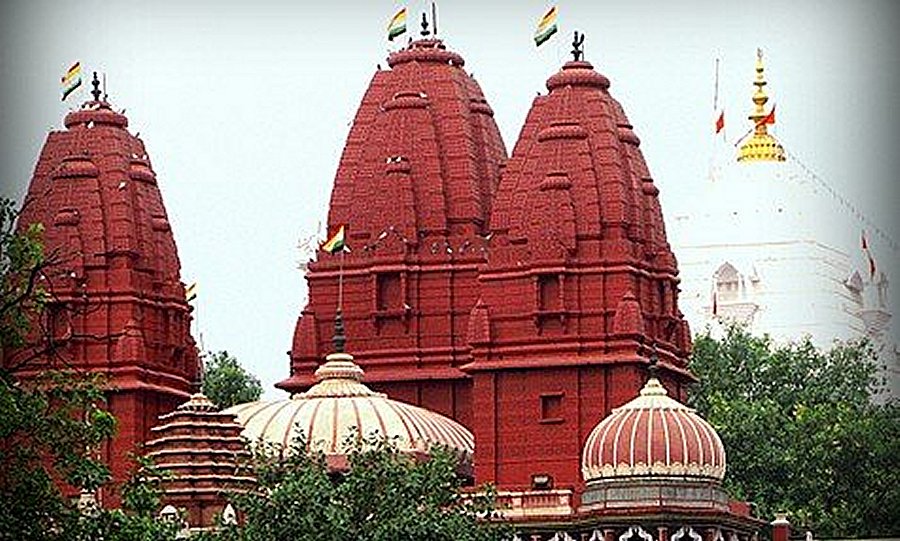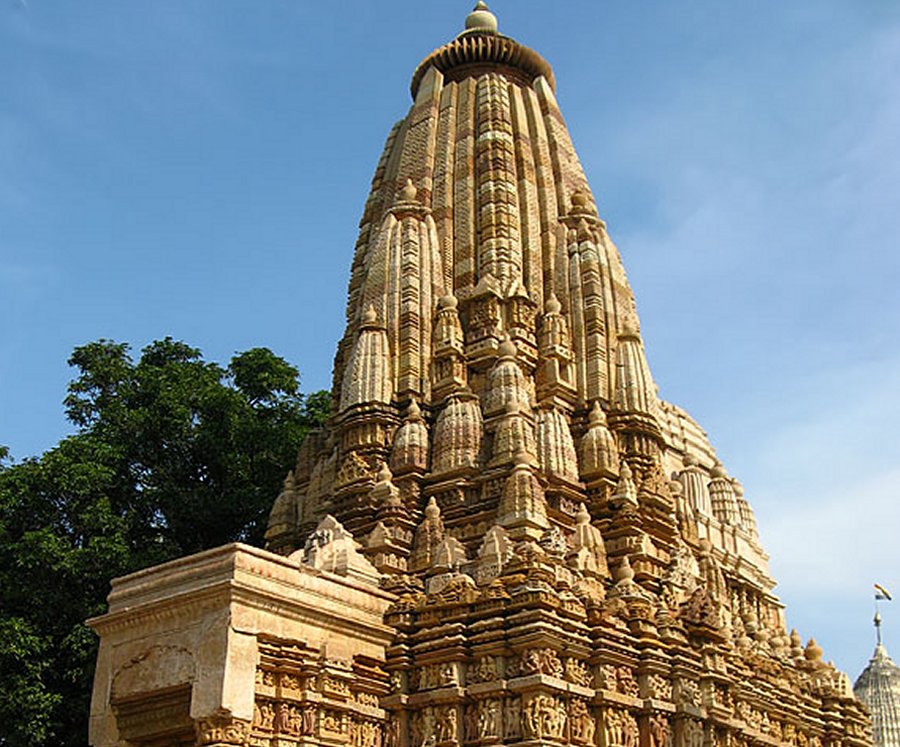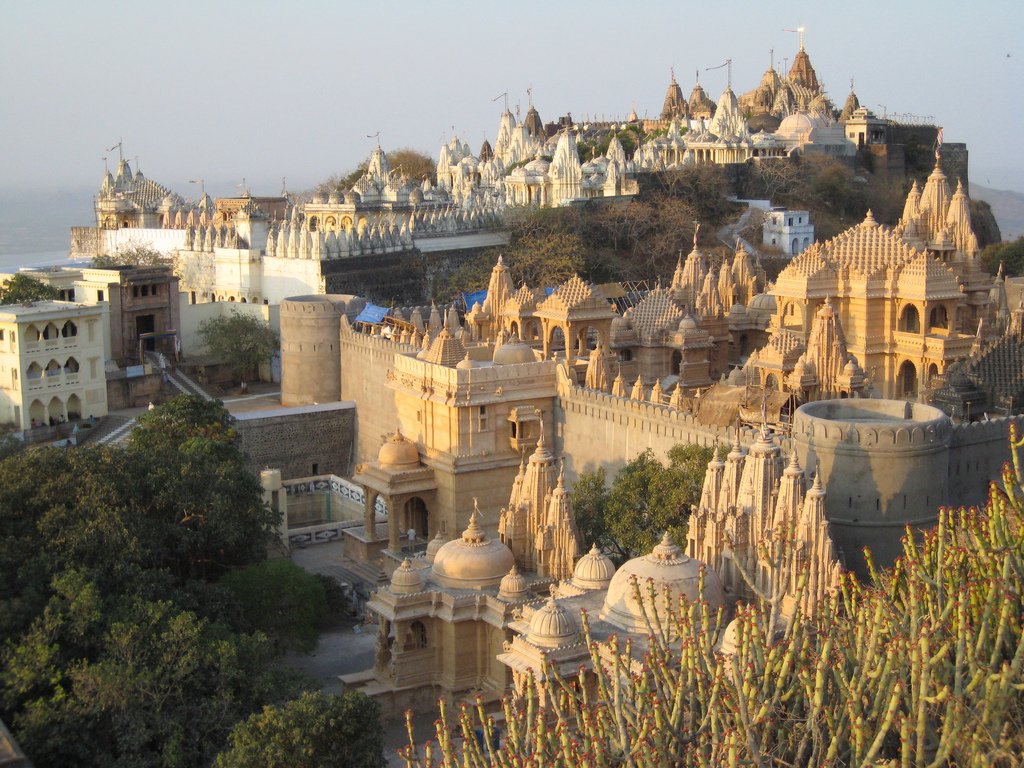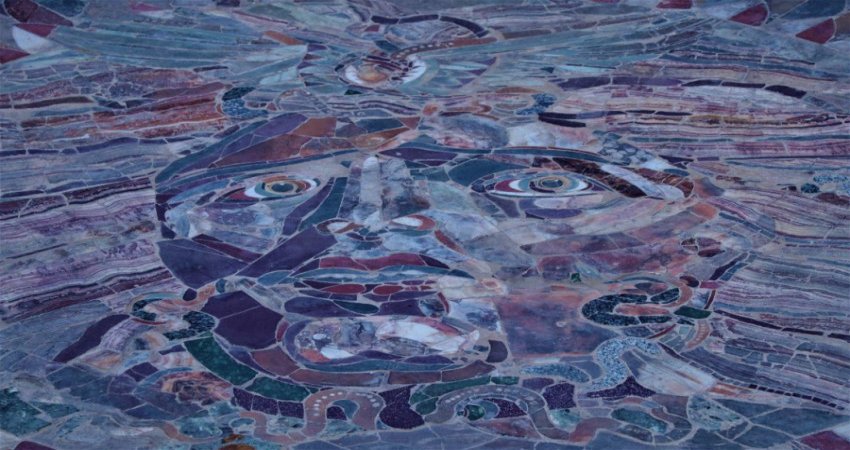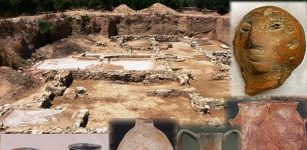8 Remarkable Jain Temples – Marvelous Ancient Architecture And Stone Carvings
MessageToEagle.com – Jainism – is an ancient religion of self-help and originates from India. There are no gods or spiritual beings that will help human beings. Jainism teaches that the way to liberation and bliss is to live a life of harmlessness and renunciation.
The aim of Jain life is to achieve the soul’s liberation, which means escaping the continuous cycle of birth, death and rebirth so that the immortal soul lives forever in a state of bliss. Liberation is achieved by eliminating all karma from the soul. Human beings, animals and plants contain living souls and each of these souls is considered of equal value and should be treated with respect and compassion. Jains are strict vegetarians and there are approximately 4.2 million Jain followers in India and about 6 to 12 million worldwide
There are many Jain temples located in the different parts of India and although the majority of them are rather plain and simple worship rooms, there are some very impressive and elaborate.
1. Lal Mandir Temple
The temple was constructed in 1658 AD during the Mughal rule. Though not as ornate as the fine temples in Gujarat and Rajasthan, it has detailed carvings and gilded paintwork. Lal Mandir has also a very famous bird’s hospital. The temple – dedicated to Lord Parshvanath – is actually called Digambar Jain Lal (Red) Temple.
The place is very peaceful and the ambiance is really soothing especially due to the shining of the gilded paintwork of the shrine area under the lights of butter lamps and candles, giving a very special atmosphere.
It’s a very beautiful temple.
2. Sonagiri Temple
Sonagiri (literally means, “the golden peak”) is a small town situated on a hill in central India. Several white Jain temples are scattered around Sonagiri. Both pilgrims and tourists are required to climb the 300 steps to the top bare-footed. Sonagiri is a place sacred to Digambar Jains.
This is a sacred place where King Nanganag Kumar achieved liberation from the cycles of death and life along with his fifteen million followers. It’s also popular among devotees and ascetic saints to practice for self-discipline and austerity.
3. Kulpakji Temple
This is a 10th-century Jain temple and an important pilgrimage center of Shvetambara Jains in South India, located at Kolanpak village situated south-west of Warangal in Nalgonda district of Andhra Pradesh.
The temple, which is said to be more than 2000 years old, has three idols depicting Lord Adinath, Lord Neminath, and Lord Mahaveer. On both sides of the main temple, there are eight idols of the other Tirthankars. The statue of Lord Mahavir is 51 inches in height and is said to be made from a single piece of jade.
4. Gomateshwara Temple
The temple is located 51 km southeast of Hassan in Karnataka at an altitude of about 3350 feet above sea level. The monolithic statue of Gomateshwara, the second son of Lord Adinatha, stands on a hill in the city of Shravanabelagola, 158 km from Bangalore.
Gomateshwara was the first of the 24 Tirthankara (an enlightened human who conquered the cycle of death and rebirth and enable others to follow their liberation.
The 17.38 meter (58 ft) high monolithic stone statue is one of the largest monolithic statues in the world. It was sculptured around 983 AD by Chavundaraya, a minister of the Ganga Kingdom. Once in 12 years, the festival is held and the statue of Gomateshwara is bathed in milk, curds, ghee, saffron, and gold coins.
5. Khajuraho Jain Temples
The village of Khajuraho, one of the most popular tourist destinations in India, has several Hindu and Jain temples, famous for their erotic sculptures. It’s located in the Indian state of Madhya Pradesh, in Chhatarpur District, about 620 kilometers (385 mi) southeast of New Delhi.
The temples were built over a span of 200 years, from 950 to 1150. During the rule of the Rajput Chandela dynasty, ancient Khajuraho was home to a large and flourishing Jain community. The Jains apparently lived on the east side of town and a number of Jain temples have survived in this part of Khajuraho.
Khajuraho temples were in active use through the end of the 12th century.
Two of the large temples are still well preserved.
6. Dilwara Temples
The Dilwara temples – located near Mount Abu, Rajasthan – are world-famous for their stunning use of marble and a popular Jain pilgrimage attraction.
The ornamental detail spreading over the minutely carved ceilings, doorways, pillars, and panels is simply amazing. There are 5 Jain temples here and all the temples were built by the Chalukya dynasty between the 11th and 13th centuries.
Dilwara Jain Temples are known worldwide for their extraordinary architecture and some experts also consider it architecturally superior to the Taj Mahal. The temple interior showcases the extraordinary work of human craftsmanship at its best. The ornamental details of marble stone carvings are phenomenal and unmatched, The minutely carved ceilings and the pillars are just amazing. All this was done at a time when no transport or roads were available at a height of 1200+ Mtrs in Mount Abu, Huge blocks of marble stones were transported on elephant backs from the Arasoori Hills at Ambaji to this remote hilly region of Mount Abu.
7. Palitana Temples
Amongst all the Jain temples, Palitana Jain mandir is considered to be the most sacred place. It’s a major pilgrimage center for Jains. It’s located on Shetrunjaya hills, in the western Indian state of Gujarat, 51 km southwest of Bhavnagar. There are several hundreds of Jain temples located on the sacred Mount Shatrunjaya.
The temples were built by several generations of Jains over a period of 900 years, from the 11th century onwards. The top of the hill can be reached by climbing 3,572 steps. There are 863 Jain Palitana temples in Gujarat, exquisitely carved in marble.
8. Ranakpur Temple
Ranakpur Temples are acclaimed worldwide for their intricate and superb architectural style. Located in the village of Ranakpur near Sadri town in the Pali district of Rajasthan, Ranakpur temple lies at a distance of 95 km in the north of Udaipur city. Built in the 15th century, Ranakpur temples are known for being the largest and most important temples of the Jain cult.
See also:
7 Unsolved Ancient Mysteries Archaeologists Hope To Solve This Century
10 Remarkable Similarities Between Ancient Civilizations
The Jain Temples of Ranakpur are certainly creditable for their splendid architecture. This temple is wholly constructed in light-colored marble and comprises a basement covering an area of 48000 sq feet. There are more than 1400 exquisitely carved pillars that support the temple.
In the complex, there are several temples and Chaumukha Temple is the most important and as the term Chaumukha suggests, this temple is four-faced. Chaumukha temple is dedicated to Lord Adinath, who is the first ‘Tirthankara’ of the Jains. The Temple structure is highly compound having four different doorways to get into the chambers. The pillars are all differently carved and no two pillars are the same. The dating of this temple is controversial but it was probably built between the late 14th and mid-15th centuries.
MessageToEagle.com via AncientPages.com

